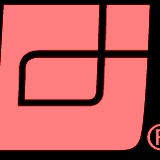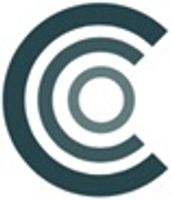Information
-
Document Number
-
Audit Title
-
Site
-
Location
-
Conducted on
-
Attendees:
-
Prepared by:
Annual Site Visit Trip Report
Conduct Facility Site Tour with General Environmental Inspection Checklists
-
Discussion:
General Environmental Site Inspection Checklist
-
Empty Drums and Non-Haz/Haz Waste Container Storage Areas
-
1. Are drums/containers free of leaks and in good condition?
-
2. Are drums/containers closed if not in use?
-
3. Are drums/containers clearly labeled with contents and date of generation? (mark N/A if no waste on site during time of inspection)
-
4. Are waste stored in compatible containers? (mark N/A if no waste on site during time of inspection)
-
5. Are incompatible wastes stored separately? (mark N/A if no waste on site during time of inspection)
-
6. Are empty drums clearly labeled, RCRA empty, and properly stored for disposal or reuse?
-
7. Is secondary containment provided/adequate? (largest container plus 25/ 24 hour rain event)
-
8. Is secondary containment system free of cracks, holes, or other breaches?
-
9. Is water being discharged at the time of this inspection?
-
10. Is the water in the containment free of any sheen?
-
11. Are the manual open-and-close valves maintained in a locked and closed position when not discharging?
-
12. Are storm water releases from the containment being properly documented?
-
General Comments:
-
Waste Storage Photos:
-
Raw Material Storage Areas (Drums, Totes, Super Sacks, etc)
-
1. Are drums/containers free of leaks and in good condition?
-
2. Are drums/containers closed if not in use?
-
3. Are drums/containers clearly labeled with contents? (mark N/A if no waste on site during time of inspection)
-
4. Are incompatible wastes stored separately? (mark N/A if no waste on site during time of inspection)
-
5. Is secondary containment provided/adequate? (largest container plus 25/ 24 hour rain event)
-
6. Is secondary containment system free of cracks, holes, or other breaches?
-
7 . Is water being discharged at the time of this inspection?
-
8. Is the water in the containment free of any sheen?
-
9. Are the manual open-and-close valves maintained in a locked and closed position when not discharging?
-
10. Are storm water releases from the containment being properly documented?
-
General Comments:
-
Raw Material Storage Photos:
-
AST Product Storage Areas
-
1. Are tank shells free of leaks and in good condition?
-
2. Are drums/containers (if any) located throughout the AST area closed if not in use?
-
3. Are ASTs clearly labeled with contents? (mark N/A if no waste on site during time of inspection)
-
4. Are ASTs compatible with the materials being stored? (mark N/A if no waste on site during time of inspection)
-
5. Are tank foundations in good condition? (largest container plus 25/ 24 hour rain event)
-
6. Is tank piping free if leaks and in good condition?
-
7. Are drip buckets and pans labeled and less than 3/4 full with lids readily accessible?
-
8. Are pumps and pump pads free of excessive product leakage/spillage?
-
9. Each container equipped with at least one of the following for liquid level sensing:
-
(i) Are high level alarms with an audible or visual signal at a constantly attended operation or surveillance station working properly?
-
(ii) Are high level cutoff pumps working properly?
-
(iii) Are direct audible or code signal communication between container gauges and pumping station (procedure) working properly?
-
(iv) Are fast response systems (such as digital computers, telepulse, or direct vision gauges) working properly?
-
(v) Are the liquid level sensing devices regularly tested to ensure proper operation?
-
10. Is secondary containment provided/adequate? (largest container plus 25/ 24 hour rain event)
-
11. Is the secondary containment system free of cracks, holes, or other breaches?
-
12. Is water being discharged at the time if this inspection?
-
13. Is water in the containment area free of any sheen?
-
14. Are the manual open-and-close containment valves maintained in a locked and closed position when not discharging?
-
15. Are storm water releases from the containment being properly documented?
-
16. Is adequate lighting provided so that it assists in the discovery of discharges during hours of darkness?
-
17. Is tank integrity regularly inspected using a non-destructive method other than visual inspection?
-
General Comments:
-
AST Storage Area Photos:
-
Outfall Areas
-
1. Are stored and spilled materials being prevented from reaching inlets, pipes, or ditches?
-
2. Are controls to minimize materials being carried by runoff to drainage ways (silt fencing, screens over inlets, etc) in good shape and operating properly?
-
3. If outfalls leaving properly are flowing during dry weather, is flow due to permitted non-storm water discharge? (mark N/A if none is flowing)
-
4. Are inlets, pipes, ditched and ponds free of excess sediment, debris, raw materials, oil sheen, and other possible contaminants?
-
5. Are the manual open-and-close containment valves maintained in a locked and closed position when not discharging?
-
General Comments:
-
Outfall Area Photos:
-
Lab Area (if applicable)
-
1. Are all Satellite Accumulation Areas marked with with proper signage? (mark N/A if none)
-
2. Is all waste accumulated by the lab being logged?
-
3. Are signs present to warn of pouring chemicals down sinks/ drains?
-
4. Is the procedure for handling mercury thermometers working properly?
-
General Comments:
-
Lab Area Photos:
-
Truck Unloading/ Loading Rack Areas (if applicable)
-
1. Are starter controls on pumps locked in the "off" position and accessible only to authorized personnel when not in non-operating/non-standby status?
-
2. Are all hoses, pipes, and valves free of leaks and in good condition?
-
3. Are drip buckets and pans labeled and less than 3/4 full with lids readily accessible?
-
4. Are standard procedures for loading/unloading working properly?
-
5. Are the lower-most drains and all outlets on trailers being inspected prior to filling/departure?
-
6. Is an early departure warning device in place during loading/unloading events? (STOP sign, wheel clocks, etc.)
-
7. Is secondary containment provided/adequate? (largest container plus 25 year/ 24 hour rain event)
-
8. Is the secondary containment system free of cracks, holes, or other breaches?
-
9. Is water being discharged at time if this inspection?
-
10. Is water in the containment free of any sheen?
-
11. Are the manual open-and-close containment valves maintained in a locked and closed position when not discharging?
-
12. Are the storm water releases from the containment being properly documented?
-
13. Is adequate lighting provided for the nighttime operations and so that it assists in the discovery of discharges occurring during hours of darkness?
-
General Comments:
-
Truck Loading/ Unloading Rack Area Photos:
-
Railcar Unloading/ Loading Rack Areas (if applicable)
-
1. Are starter controls on pumps locked in the "off" position and accessible only to authorized personnel when not in non-operating/non-standby status?
-
2. Are all hoses, pipes, and valves free of leaks and in good condition?
-
3. Are drip buckets and pans labeled and less than 3/4 full with lids readily accessible?
-
4. Are standard procedures for loading/unloading working properly?
-
5. Are the lower-most drains and all outlets on trailers being inspected prior to filling/departure?
-
6. Is an early departure warning device in place during loading/unloading events? (STOP sign, wheel clocks, etc.)
-
7. Is secondary containment provided/adequate? (largest container plus 25 year/ 24 hour rain event)
-
8. Is the secondary containment system free of cracks, holes, or other breaches?
-
9. Is water being discharged at time if this inspection?
-
10. Is water in the containment free of any sheen?
-
11. Are the manual open-and-close containment valves maintained in a locked and closed position when not discharging?
-
12. Are the storm water releases from the containment being properly documented?
-
13. Is adequate lighting provided for the nighttime operations and so that it assists in the discovery of discharges occurring during hours of darkness?
-
General Comments:
-
Railcar Loading/ Unloading Rack Area Photos:
-
Dock Area (if applicable)
-
1. Are starter controls on pumps locked in the "off" position and accessible only to authorizes personnel when in non-operating/non-standby status?
-
2. Are all hoses, pipes, and valves free of leaks and in good condition?
-
3. Are drip pans free of cracks, holes, or other breaches?
-
4. Are containment valves maintained in the locked and closed position?
-
5. Are drip pans clean and free of accumulated liquid?
-
6. Is a copy of the current Dock Operations Manual available at the dock?
-
General Comments:
-
Dock Area Photos:
-
Best Management Practices / General Facility Information
-
1. Are Good Housekeeping measures sufficient?
-
2. Are inspections conducted on a regular basis?
-
3. Are employees being routinely trained on pollution and spill prevention measures?
-
4. Are spill cleanup materials readily available in adequate amounts?
-
5. Is adequate security provided and in adequate working order to prevent discharges occurring through acts of vandalism? (Fences, gates, cameras, lighting, etc.)
-
6. Are all pad mounted oil-filled transformers free of leaks and in good condition?
-
7. Is adequate lighting provided so that it assists in the discovery of discharges occurring during hours of darkness?
-
General Comments:
-
Inspector Signature
Observe Any Previous Spill/Release Sites
-
Previous spill release sites?
Observe Any New/Current Construction
-
New/ Current construction?
Review Filing System and Files
-
Filing system issues?
Software Review/Help (EIS, ePlans, etc)
-
Software review/help?
Provide Any Other Needed Assistance
-
Other observations?
Action Items
-
Action Item
-
Description:
-
Assigned To:
-
Due By:










